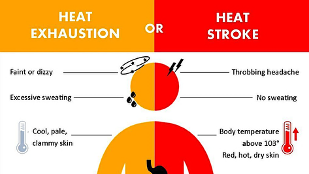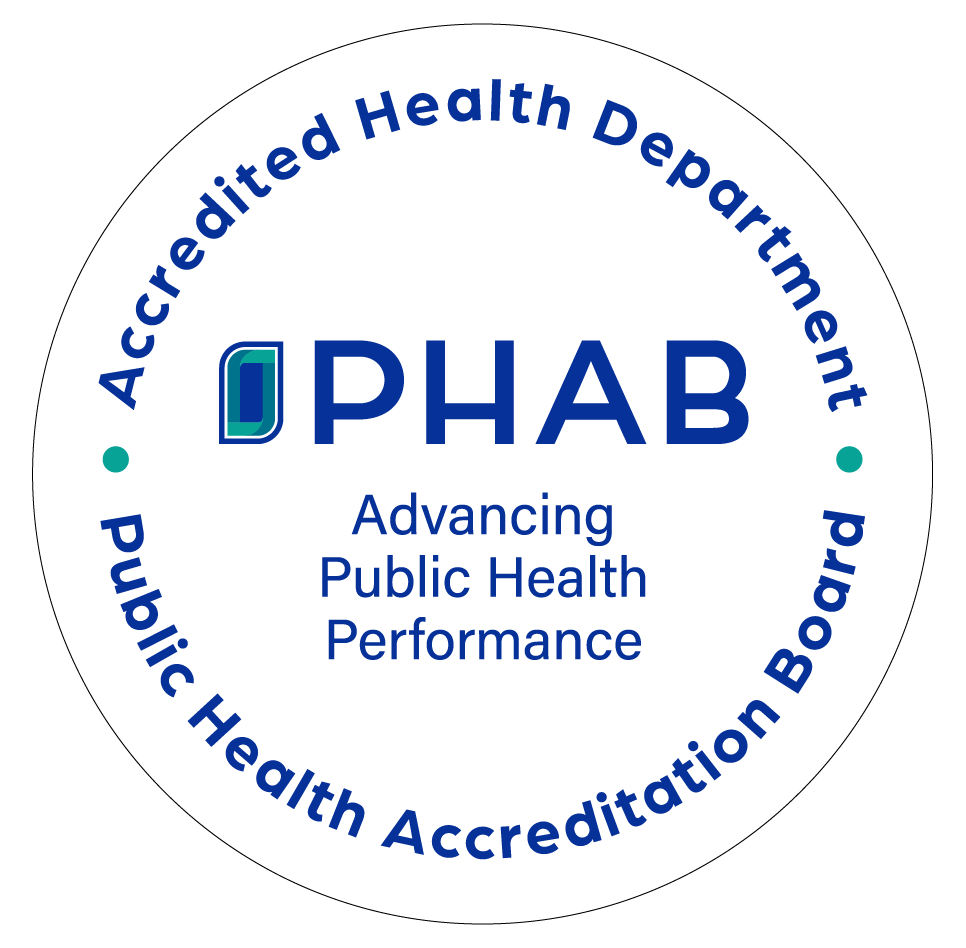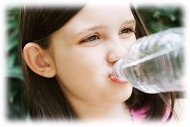Heat Related Illnesses and First Aid
Heat Exhaustion
Heat exhaustion is the body’s response to an excessive loss of water and salt, usually through excessive sweating. People most prone to heat exhaustion are those who are elderly, have high blood pressure, and those working in a hot environment.
Symptoms of heat exhaustion include:
- Headache
- Nausea
- Dizziness

- Weakness
- Irritability
- Thirst
- Heavy sweating
- Elevated body temperature
- Decreased urine output
First Aid to treat heat exhaustion
- Take to a clinic or emergency room for medical evaluation and treatment.
- If medical care is unavailable, call 911.
- Someone should stay with the person until help arrives.
- Remove from a hot area and give liquids to drink.
- Remove unnecessary clothing, including shoes and socks.
- Cool with cold compresses or wash head, face, and neck with cold water.
Encourage frequent sips of cool water.
Heat Syncope (Fainting from the heat)
Heat syncope is a fainting (syncope) episode or dizziness that usually occurs with prolonged standing or sudden rising from a sitting or lying position. Factors that may contribute to heat syncope include dehydration and lack of acclimatization.
Symptoms
- Fainting (short duration)
- Dizziness
- Light-headedness during prolonged standing or suddenly rising from a sitting or lying position
First Aid
People with heat syncope should:
- Sit or lie down in a cool place.
- Slowly drink water, clear juice, or a sports drink.
Heat Cramps
Heat cramps usually affect people who sweat a lot during strenuous activity. This sweating depletes the body’s salt and moisture levels. Low salt levels in muscles cause painful cramps. Heat cramps may also be a symptom of heat exhaustion.
Symptoms
Muscle cramps, pain, or spasms in the abdomen, arms, or legs
First Aid
People with heat cramps should:
- Drink water and have a snack and/or carbohydrate-electrolyte replacement liquid (e.g., sports drinks) every 15 to 20 minutes.
- Avoid salt tablets.
- Get medical help if the person has heart problems, is on a low-sodium diet, or if cramps do not subside within 1 hour.
Heat Stroke
Heat stroke is the most serious heat-related illness. It occurs when the body becomes unable to control its temperature: its temperature rises rapidly, the sweating mechanism fails, and the body cannot cool down. When heat stroke occurs, the body temperature can rise to 106°F or higher within 10 to 15 minutes. Heat stroke can cause death or permanent disability if emergency treatment is not given.
Symptoms of heat stroke include:
- Confusion, altered mental status, and slurred speech.
- Loss of consciousness (coma)
- Hot, dry skin or profuse sweating
- Seizures
- Very high body temperature
- Fatal if treatment is delayed.
First Aid: To treat heat stroke:
- Call 911 for emergency medical care.
- Stay with the person until emergency medical services arrive.
- Move the person to a shaded, cool area and remove outer clothing.
- Cool the person quickly with cold water or an ice bath if possible; wet the skin, place cold, wet clothes on the skin, or soak clothing with cool water.
- Circulate the air around the person to speed cooling.
- Place cold, wet clothes or ice on the head, neck, armpits, and groin, or soak the clothing with cool water.
Dehydration
Recognizing Dehydration
In the summer, drink more fluids and avoid situations where you would be exposed to extreme heat. Avoid prolonged activity in extreme heat.
It is important to proactively encourage children and seniors to drink fluids and cool off in the shade on extremely hot days, as they have a more difficult time regulating their body temperature.
Mild dehydration in children can look like
- Sunken eyes
- Few or no tears when crying
- Peeing less than usual
It is important to seek medical attention if a child exhibits:
- Eyes that look sunken
- Dry, cool skin
- Irritability
- Drowsiness or dizziness
Tips to Keep Hydrated
- Gulps per 15 minutes: For every 15 minutes of outdoor activity, drink about four ounces of water. This is approximately four ounces of water. This is approximately four gulps.
- Increase hydration with popsicles, ice cream, smoothies, or yogurt: A great way to increase hydration in children is to have homemade popsicles or yogurt with real fruit.
- Fruit, pretzels, and goldfish: Give children small snacks with salt and potassium to help protect against electrolyte loss and promote hydration. Pretzels, goldfish crackers, or a cheese stick with some oranges, a banana, or strawberries are all good options.
- Skip sugary drinks: Avoid sugary sodas and sports drinks. Carbonated water mixed with fruit juice is a great alternative.



